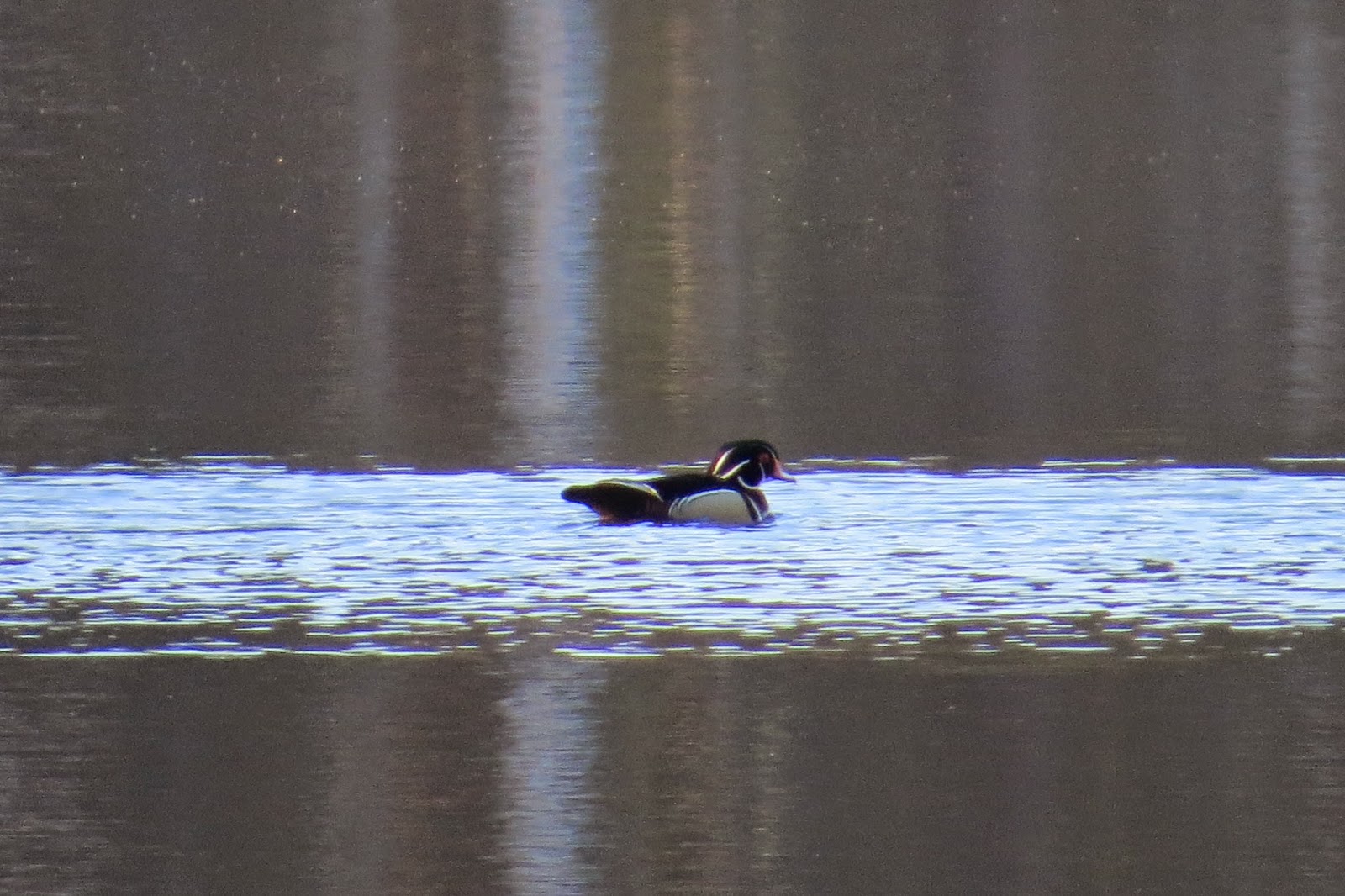 |
| Downy Woodpecker (male), photographed along the main drive. |
Communing with the natural world requires no skills or technology, but when it does, we call it data collection. These days, citizens can be scientists, and a Sunday morning stroll can suddenly become an opportunity to conduct an avian census. In a nutshell, here's how it works. The Cornell Lab of Ornithology has revolutionized birding (yes, that is a real word) by developing a database of crowd-sourced bird sightings, easily accessible and open to anyone with an internet connection. The database is called eBird, and it is managed by a team of expert birders and ornithologists who review and analyze the sightings in order to minimize false identifications, typos, or other "noise." Even better, there are now apps tied to the eBird database that allow observers to upload sightings and lists from the field in real time. The result is an exploding amount of information that can be used to evaluate bird movements and populations, leading to rapid advancements in avian conservation. Now, that Downy Woodpecker that you see by the driveway instantly becomes a valuable statistic as well as a stunning work of natural beauty.
So anyway, this morning, the birds were in full song, with many of the resident species already on territory and some migrants returning to set up shop for the season, and I grabbed my binoculars, camera, and smartphone to see what I could find. Here is a list (generated using the iPhone app, BirdLog NA, and eBird) of the species observed during a walk around MX from the main entrance to the turf fields:
Apr 19, 2015 7:23 AM - 9:40 AM
Protocol: Traveling
1.5 mile(s)
Comments: <br />Submitted from BirdLog NA for iOS, version 1.8
40 species
Canada Goose 3
Wood Duck 5
Mallard 4
Great Blue Heron 1
Turkey Vulture 1
Broad-winged Hawk 1 Soaring over turf fields.
Red-tailed Hawk 2
Killdeer 1
Mourning Dove 2
Red-bellied Woodpecker 2
Downy Woodpecker 7
Hairy Woodpecker 2
Northern Flicker (Yellow-shafted) 2
Eastern Phoebe 3
Blue Jay 22
American Crow 3
Fish Crow 2 Calling, flying south over tennis courts toward pond.
Northern Rough-winged Swallow 1
Tree Swallow 4
Barn Swallow 1
Black-capped Chickadee 10
Tufted Titmouse 8
White-breasted Nuthatch 7
Ruby-crowned Kinglet 2
American Robin 15
European Starling 2
Palm Warbler (Yellow) 1
Pine Warbler 3
Chipping Sparrow 7
Song Sparrow 3
White-throated Sparrow 2
Dark-eyed Junco (Slate-colored) 6
Northern Cardinal 3
Red-winged Blackbird 12
Rusty Blackbird 4 One calling from Bateman's outflow swamp, one flyover. Two perched, seen well from bridge to turf fields.
Common Grackle 15
Brown-headed Cowbird 2
House Finch 2
American Goldfinch 5
House Sparrow 6
In the morning skies, a few hawks were soaring on thermals created by the warm spring sun, and it was a good opportunity to compare a recently-arrived migrant Broad-winged Hawk with the resident Red-tailed Hawks. If you look at the photos of the birds below, you might be able to see the diagnostic black-and-white bands on the tail of the broad-wing versus the orange ("red") of the red-tail:
 | ||
Broad-winged Hawk
|
The red maples are finally in bloom:
A few Rusty Blackbirds are moving through the red maple swamps on the way north to their breeding grounds in the boreal forests of Canada. This species has decreased significantly in recent decades, and projects like eBird have focused on trying to gather information on its populations and movements in order to understand the causes of decline. To distinguish a Rusty from the more common Red-winged, look for a lack of red in...you guessed it...the wing. Clicking on and looking closely at this photo (taken from the bridge to the turf fields), you may also be able to pick out the bird's yellow iris.
While in the swamps, you might see Skunk Cabbage emerging. This wetland plant is so named because its leaves release a skunky odor when broken or crushed.
And finally, you never know when you might come across a stunning male Wood Duck like this one (poorly photographed in the middle of Bateman's Pond), so keep your eyes peeled!





No comments:
Post a Comment